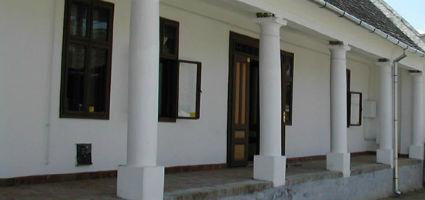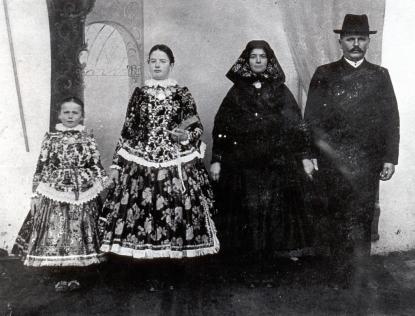2024. May 3. Friday
Bata Region House - Báta
 |
Address: 7149, Báta Fő u. 86.
Phone number: (74) 490-558, (20) 576-4130
E-mail: batai.tajhaz@gmail.com
Opening hours: Tue 8-12, Thu, Sat 13-17
|
The exhibition has closed for visitors.
2007.07.12. - 2007.09.20.
Museum tickets, service costs:
|
Ticket for adults
|
500 HUF
|
|
|
Ticket for children
|
250 HUF
|
The folk cloths of Sárköz evolved in the second half of the 19th century. After the Danube was regulated, the people became well off and it shows in the folk cloths that developed. Báta is a Catholic island in the Sárköz. The clothing of the Catholics was less ornamented than that of the Reformed church. At the beginning they were loose shirt with sleeves sewn to the side called 'scarlet shirt'. The sleeves were changed to to fitting ones. The neck of the young people was ornamented by white or blue pearls.

In the 1910's the big girls were made so-called 'twenties on chain', similar to accessories of the Slavic people. Their hair was parted in the middle and bundled on their neck. Old women wore their shawls tied on their nape and silk, velvet or cotton shawl was tied over it. They wore ornamented shawls on their shoulder. The very hard white underskirts were called 'rokolya'. The bottom of these had lace on. Under the skirt and shirt wore on holidays white skirt with lace was tied.
A cloth tied around the waist was necessary for women who were working at home or went to the market. Their cloths were completed by ties ornamented by flowers. On holidays they wore black velvet shoes, so-called Turkish slippers. On weekdays, they wore wool shoes of slippers. The clothing of men was similar to that of the Great Planes.
They made their vests of black baize ornamented by braids. They wore tight black pants and shirt made of hemp with wrinkles in the shoulders and cuffs. The shirt of the groom was ornamented with white embroidery. On holidays, men wore black boots and hats. On weekdays, they wore white baggy pants and shirt without ornamentation.

In the 1910's the big girls were made so-called 'twenties on chain', similar to accessories of the Slavic people. Their hair was parted in the middle and bundled on their neck. Old women wore their shawls tied on their nape and silk, velvet or cotton shawl was tied over it. They wore ornamented shawls on their shoulder. The very hard white underskirts were called 'rokolya'. The bottom of these had lace on. Under the skirt and shirt wore on holidays white skirt with lace was tied.
A cloth tied around the waist was necessary for women who were working at home or went to the market. Their cloths were completed by ties ornamented by flowers. On holidays they wore black velvet shoes, so-called Turkish slippers. On weekdays, they wore wool shoes of slippers. The clothing of men was similar to that of the Great Planes.
They made their vests of black baize ornamented by braids. They wore tight black pants and shirt made of hemp with wrinkles in the shoulders and cuffs. The shirt of the groom was ornamented with white embroidery. On holidays, men wore black boots and hats. On weekdays, they wore white baggy pants and shirt without ornamentation.
